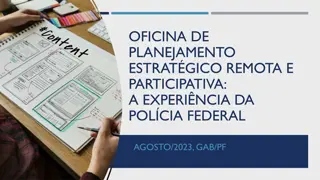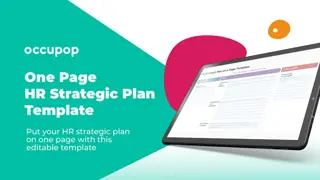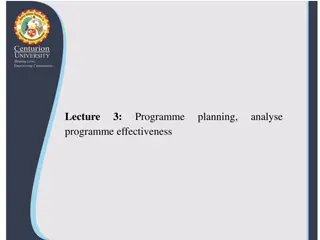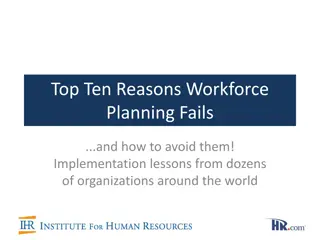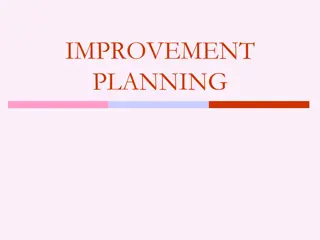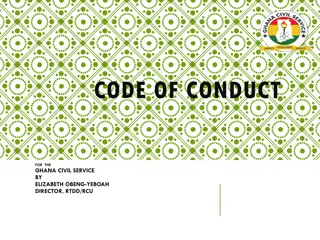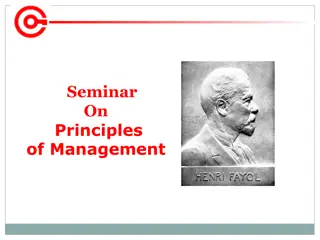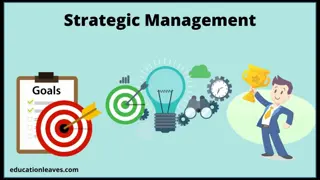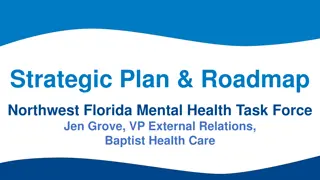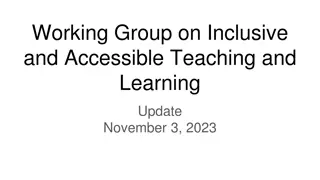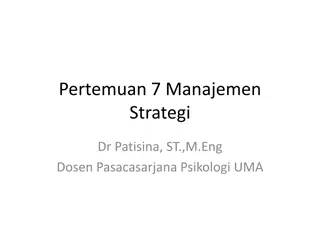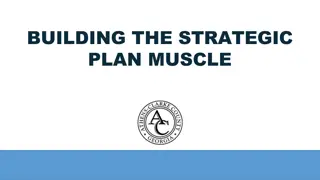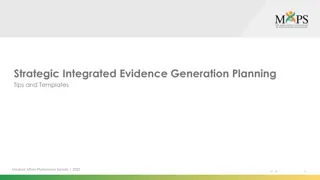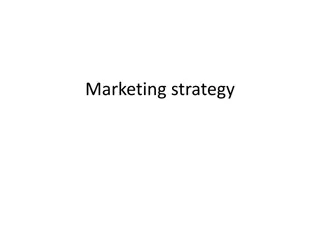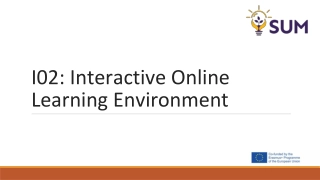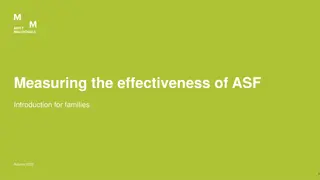Tools and Principles for CSO Strategic Planning
The EMERGE project, benefiting from a grant under the Active Citizens Fund Cyprus program, explores various tools for CSO strategic planning. It covers brainstorming activities, visioning, SWOT analysis, and PESTLE analysis, essential for guiding organizations in achieving their goals effectively.
Download Presentation
Please find below an Image/Link to download the presentation.
The content on the website is provided AS IS for your information and personal use only. It may not be sold, licensed, or shared on other websites without obtaining consent from the author. Download presentation by click this link. If you encounter any issues during the download, it is possible that the publisher has removed the file from their server.
Presentation Transcript
Module 2 Strategic Planning Unit 2: Tools and Principles for CSO Strategic Planning The EMERGE project benefits from a grant under the Active Citizens Fund Cyprus program, funded by Iceland, Liechtenstein and Norway, through the EEA and Norway Grants 2014-2021.
Tools for CSO Strategic Planning Brainstorming Activity: Have you ever used any planning or Strategic Planning tools? What are they and how did you utilise them?
Tools for CSO Strategic Planning Visioning The vision of an organisation is the most important piece of foundation that guides all its further plans and prospects. Visioning starts with brainstorming which gradually leads to the long-term visualization, as desired by the organisation. Visioning answers basic questions such as: what does the organisation want to achieve in future? what it shall look like? what image should build in the minds of its prospects and who customers? shall be the potential
Tools for CSO Strategic Planning Overall, visioning gives a futuristic revelation to the organisation s present image and standing. Organisational leaders look back to the vision and design their statement accordingly in order to have a realistic approach for the organisation. The vision statement should be expressive and well drafted so that it appeals to people and at the same time give a direction to the NGO.
Tools for CSO Strategic Planning SWOT Analysis A SWOT analysis is a framework to help assess and understand the Strengths, Weaknesses, Opportunities, and Threats. Whereas strengths and weaknesses are internal factors which assert a relative advantage (or disadvantage) to an organization over its competition, opportunities and threats are elements of the external environment that management can seize upon to improve performance. CSOs and NGOs may use the information gained from a SWOT analysis to determine which tasks are more important for meeting their goals and objectives. This can help the organisation plan for the future and determine which tasks to assign team members.
Tools for CSO Strategic Planning PESTLE Analysis NGOs are often subject to external factors which can have a significant impact on their operations. Therefore, strategic planning for NGOs should involve assessing these external factors and developing strategies that are flexible enough to adapt to changes in the external environment. A PESTLE analysis studies the key macro-level external factors (Political, Economic, Sociological, Technological, Legal and Environmental) that influence an organisation. It can be used in a range of different scenarios, and can guide people professionals and senior managers in strategic decision-making. By conducting research analysing those factors, organisations can assess any risks specific to their industry and organisation, and make informed decisions. The application of PESTEL analysis can help CSOs identify the major external environmental forces that shape the strategy and competitive landscape and support its strategic decision-making process. As Civil Society looks to expand and leverage its competencies and core capabilities, conducting the PESTEL analysis is imperative for developing effective strategies and achieving long-term growth objectives.
Tools for CSO Strategic Planning Hedgehog Concept The hedgehog concept is created to produce the best long-term results and distinguish the key chances from the unqualified opportunities. It the intersection of three circles: 1. what you are deeply passionate about 2. what you can be the best in the world at and 3. what best drives your economic or resource engine. Transformations from good to great come about by a series of good decisions made consistently with a Hedgehog Concept. The hedgehog concept is of particular significance in the social sector due to the complexity of the social sector where success is measured by brand reputation built upon tangible results and emotional connection instead of financial success. At the same time, it is an effective tactic against the danger of the bottomless pit.
Principles of Strategic Planning for CSOs Communication - Collaboration: A good strategic plan provides a collectively developed road map for achieving an organisation s vision. Identifying and involving key stakeholders and employees from the offset of the planning process, as well as maintaining consistent lines of communication with them is critical. Transparency: process is as important as communication and accountability. No part of the planning process should take place behind closed doors. planning is both a bottom-up and a top-down process. Openness in the strategic planning Effective strategic Flexibility: Strategic planning is a dynamic and continuous process. Successful strategic plans are adjustable and responsive to environmental and conditional changes. A strategic plan must be a living document which can adapt to the fast-changing environment in which NGOs work in.
Principles of Strategic Planning for CSOs Assessment: Assessment is one of the most important but one of the most frequently overlooked aspects of planning, especially among CSOs where success is not always measurable. Assessment of outcomes and achievements is an obvious necessity but assessment should be emphasized throughout the process. It is critical that every goal (and accompanying strategies and action plans) is written in such a way that measurability is feasible. Specificity: With strategic planning, setting specific priorities is an important step in achieving strategic objectives. Without sufficient specificity in central elements of the plan such as strategies and action plans, an organization risks producing a long list of ambitious objectives with no clear picture of how to implement them. Leverage Strengths: Understanding what is driving success in an organization maintaining its sustainability. By balancing that with innovation it will reinforce the core and expand to new opportunities strengths and capabilities. is essential to that leverage
Principles of Strategic Planning for CSOs Brainstorming Activity: Why do you think these principles should guide the Strategic Planning process? Can you think of any other principles that should guide the Strategic Planning process?
Principles of Strategic Planning for CSOs (ACTIVITY) Step 1: The participants will work in groups to groups to identify an organization that they believe conforms to the prescribed principles. Step 2: Participants are encouraged to utilise their devices and search online. Step 3: Each group will present their findings and demonstrate their reasoning for the choice they have made.
The EMERGE project benefits from a grant under the Active Citizens Fund Cyprus program, funded by Iceland, Liechtenstein and Norway, through the EEA and Norway Grants 2014-2021.






